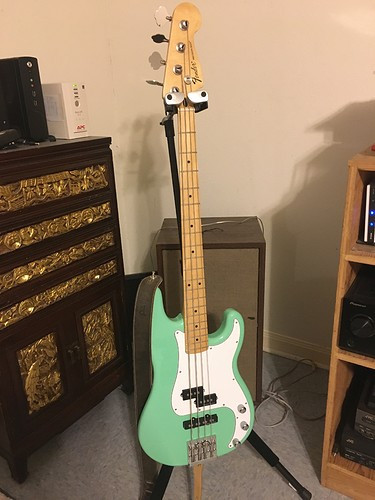When embarking on your bass guitar journey, a common concern arises: will your instrument limit your progress? Many beginners worry about starting with a less expensive bass, recalling the days of subpar “student models.” However, the landscape has shifted dramatically, with import quality significantly improving, meaning your budget stretches further than ever before.
Considering this positive shift, here are a couple of crucial points to keep in mind when searching for a Nice Bass Guitar:
Firstly, for most players, especially those in online communities and learning platforms, a top-of-the-line, costly bass isn’t a necessity. Take Josh from BassBuzz, for example. He frequently uses a Squier VM Jazz bass in his instructional videos, a model that retailed around $300. It’s clear that Josh isn’t struggling with the capabilities of his Squier. With a proper setup, even an affordable bass can perform exceptionally well.
Secondly, while fundamental quality is accessible at lower price points, certain desired features, or “amenities,” do come with a higher cost. Josh’s Squier is undoubtedly a capable instrument, but personal preferences can lead you up the price ladder. For instance, if a satin neck finish is a must-have, within the Fender range, you’d likely be looking at a Mexican-made model, pushing the price to the $600-$700 range. Fender, like many brands, effectively segments its offerings, requiring you to pay more for specific features like neck finishes or particular colors. For truly bespoke desires, like a specific color and feature combination, you might find yourself drawn to Custom Shop instruments, reaching prices of $2,000 and beyond.
My own experience mirrors this exploration. My first bass was a pre-owned Squier, acquired for a mere $200 due to a faulty input jack – an issue I readily repaired. Intriguingly, the previous owner had already modified it with aftermarket pickups and controls, which, while interesting, weren’t to my taste. I opted to revert it closer to a classic setup, investing in quality Seymour Duncan Quarter Pound pickups and CTS pots, along with original-style knobs.
For under $400, I had a perfectly functional and nice bass guitar. However, personal preferences for color and neck finish began to surface.
This led me to a more ambitious project: building my own Fender-style bass using high-quality components. This endeavor allowed me to achieve my desired specifications for roughly half the cost of a Custom Shop instrument.
 Ken's custom built P-Bass
Ken's custom built P-Bass
So, what are the real-world differences between a Squier and a custom-built Fender in practical terms?
From a player’s perspective, focusing on playability and sound, the distinctions become remarkably subtle, especially in my hands. Despite compliments from my guitar tech about the quality of my custom build, stating “It’s got good bones,” neither bass inherently elevates my playing ability nor produces a superior tone compared to the other. It’s important to note that both are equipped with the same strings and pickups and are played through the same amplifier, minimizing variables.
Ultimately, my motivation for the custom build was driven by personal desire – the pursuit of a satin neck and a surf green finish. Having achieved that, I feel content that I likely have all the bass I’ll ever truly need. That being said, the allure of a Jazz bass and its tonal variations certainly lingers on the horizon…
